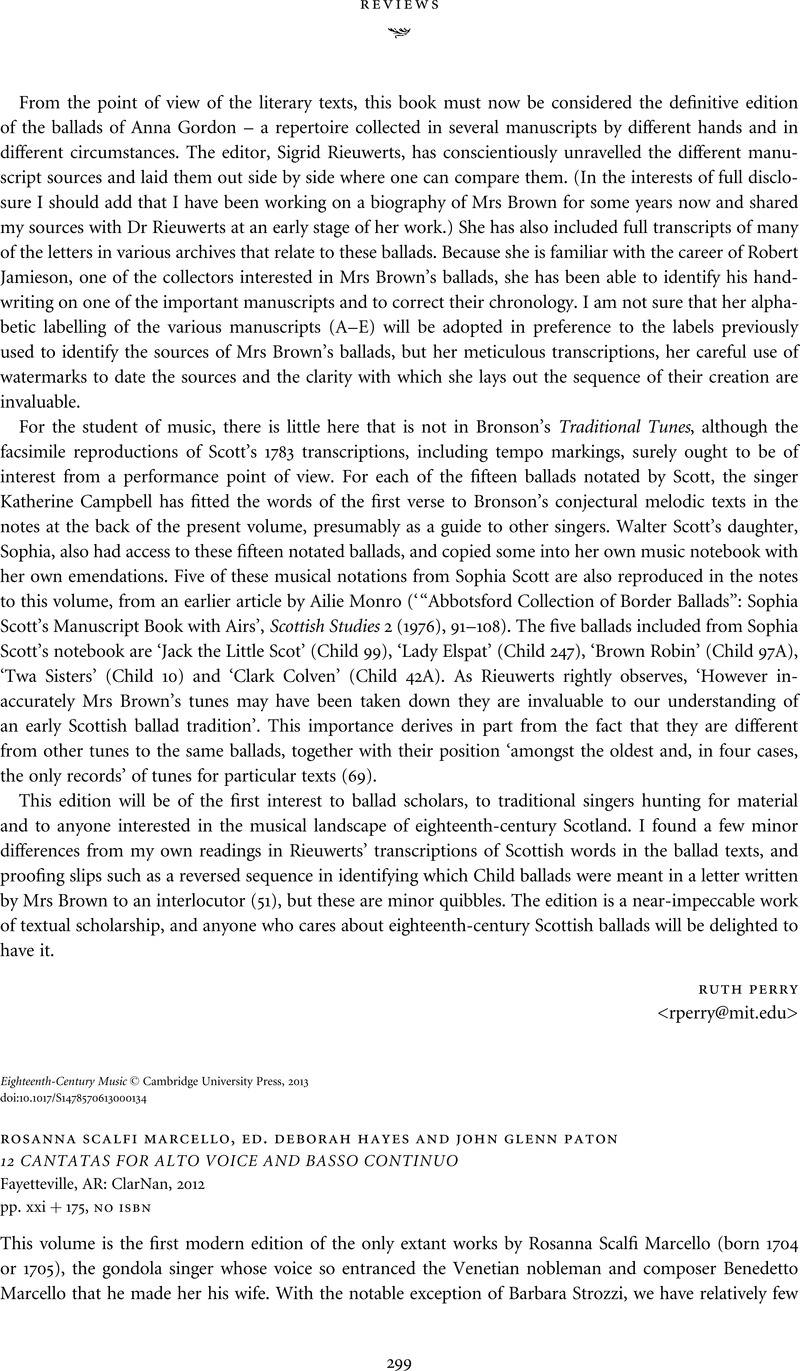No CrossRef data available.
Article contents
ROSANNA SCALFI MARCELLO , ED. DEBORAH HAYES AND JOHN GLENN PATON 12 CANTATAS FOR ALTO VOICE AND BASSO CONTINUO Fayetteville, AR: ClarNan, 2012pp. xxi+175, noisbn
Published online by Cambridge University Press: 01 August 2013
Abstract
An abstract is not available for this content so a preview has been provided. Please use the Get access link above for information on how to access this content.

- Type
- Reviews: Editions
- Information
- Copyright
- Copyright © Cambridge University Press 2013




